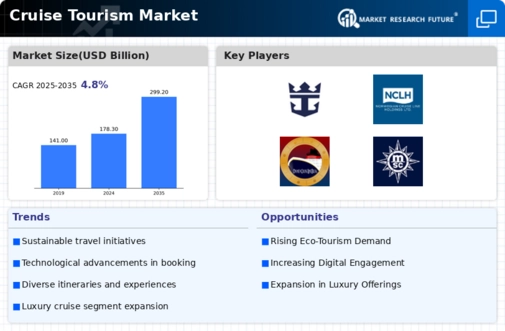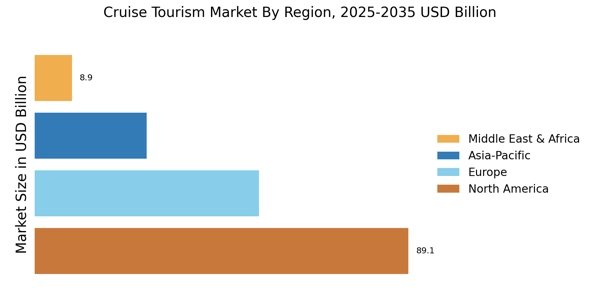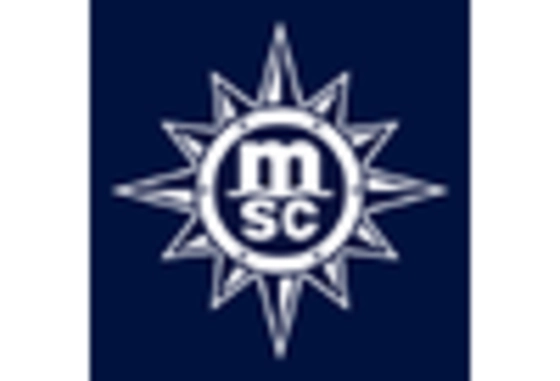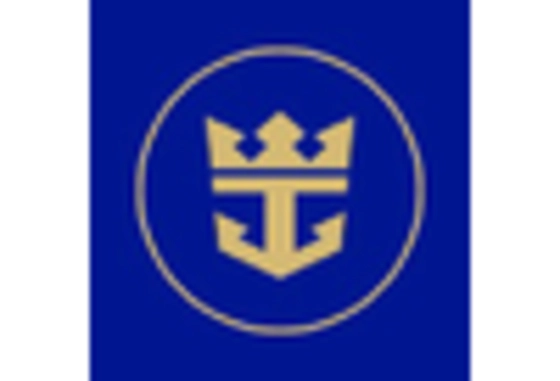Rising Disposable Incomes
The Cruise Tourism Market appears to benefit from the increasing disposable incomes of consumers in various regions. As individuals and families experience financial growth, they are more inclined to spend on leisure activities, including cruise vacations. Reports indicate that in certain regions, disposable income has risen by approximately 5 to 7% annually, which correlates with a notable increase in cruise bookings. This trend suggests that as economic conditions improve, more travelers may opt for cruise experiences, thereby driving demand within the Cruise Tourism Market. Furthermore, the appeal of all-inclusive packages offered by cruise lines may attract budget-conscious travelers seeking value for their money, further enhancing market growth.
Enhanced Onboard Experiences
The Cruise Tourism Market is evolving with a focus on enhancing onboard experiences for passengers. Cruise lines are investing significantly in amenities and entertainment options to create memorable journeys. Innovations such as themed dining, immersive entertainment, and wellness programs are becoming standard offerings. Reports suggest that cruise lines are allocating up to 30% of their budgets to improve onboard facilities, which may lead to higher customer satisfaction and repeat bookings. This emphasis on quality experiences is likely to attract a wider demographic, including younger travelers and families, thereby expanding the customer base within the Cruise Tourism Market. As competition intensifies, the ability to provide unique and engaging onboard experiences may serve as a key differentiator among cruise operators.
Expanding Cruise Destinations
The Cruise Tourism Market is witnessing an expansion in the variety of destinations offered by cruise lines. This diversification caters to a broader audience, appealing to travelers seeking unique experiences. For instance, cruise lines are increasingly including lesser-known ports and exotic locations in their itineraries, which may enhance the allure of cruise vacations. Data indicates that the number of cruise destinations has increased by over 20% in recent years, reflecting a strategic shift by cruise operators to attract a diverse clientele. This trend not only enriches the travel experience but also stimulates local economies, as more ports benefit from increased tourist footfall, thereby contributing to the overall growth of the Cruise Tourism Market.
Growing Interest in Adventure Travel
The Cruise Tourism Market is increasingly influenced by the growing interest in adventure travel among consumers. Many travelers are seeking more than just relaxation; they desire experiences that offer exploration and excitement. This trend has led to the rise of expedition cruises, which focus on unique destinations and activities such as hiking, kayaking, and wildlife viewing. Data indicates that the segment of adventure cruises has grown by approximately 15% annually, reflecting a shift in consumer preferences. As cruise lines adapt to this demand by offering specialized itineraries and excursions, they may attract a new segment of travelers who prioritize adventure, thereby contributing to the overall expansion of the Cruise Tourism Market.
Technological Advancements in Booking and Operations
The Cruise Tourism Market is experiencing a transformation due to technological advancements that streamline booking processes and enhance operational efficiency. Innovations such as mobile apps, online booking platforms, and contactless check-in procedures are becoming standard in the industry. These technologies not only improve the customer experience but also optimize operational logistics for cruise lines. Reports indicate that the adoption of technology in cruise operations has led to a reduction in operational costs by up to 10%, which may allow cruise lines to offer more competitive pricing. As technology continues to evolve, it is likely to play a crucial role in shaping the future of the Cruise Tourism Market, making it more accessible and efficient for travelers.


















Leave a Comment